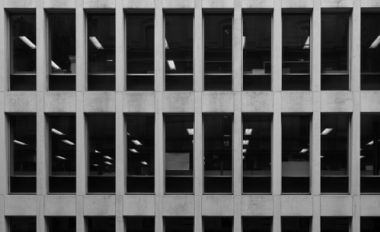You can download The Case for Good Design - Transport here or find the full text below.
We cannot afford not to invest in good design. Good design is not just about the aesthetic improvement of our environment, it is as much about improved quality of life, equality of opportunity and economic growth.
Executive summary
Our everyday lives are touched by the places that surround us. The qualities of these places – our buildings, streets and parks – informs our interactions, understandings, wellbeing and memories. A review of research exploring healthcare, education, workplaces, housing, justice, urban design and transport projects demonstrates that good design enables people, places and the environment to thrive.
A great building must begin with the unmeasurable, must go through measurable means when it is being designed and in the end must be unmeasurable.
What is good design?
‘What is good design? It’s a seemingly simple question that’s surprisingly difficult to answer. The more you think about it, the more complex the question becomes. Not only does “good design” mean different things to different people, it also changes at different times and in different contexts.’1
Good design comes in many forms and is defined by much more than how something looks. It refines the purpose and aspiration of a project, improves how it works, creates additional benefits and elevates how people feel and behave in the final outcome. Good design creates inspiring places and greater, lasting financial value. And of course, good design also looks and feels good.
Measuring the impact of design
There is extensive academic and scientific research that explores the benefits of well-designed places, and the effect of poor design on our lives. This research demonstrates that good design has far-reaching benefits, such as supporting health and wellbeing, improving environmental quality and improving productivity. As links between design and neuroscience, health and human behaviour continue to emerge, it is important that this evidence-base informs decision making about the shape, nature and function of our cities, buildings and landscapes.
Making the case
It has been demonstrated that ‘Good design does not cost more when measured across the lifetime of the building or place.’2 Investments in the design of our built environment have a lasting legacy on their place and the people who visit. Yet design is often considered a superficial afterthought.
Good design may cost more in the short term, but this investment is generally paid off over the lifetime of the building or place. Construction costs are typically 2–3 per cent of the whole-life costs, while operating costs are estimated to be 85 per cent. In comparison, design costs are small, between 0.3–0.5 per cent, yet they can significantly affect the function of a project across its lifespan, and the operating costs associated with this.3
The research demonstrates a host of benefits of good design, including:
- Well-designed hospitals help patients heal faster, support staff performance, recruitment and retention, and reduce operating costs.
- Well-designed schools improve student performance, and support staff performance, recruitment and retention.
- Well-designed police stations, courts and prisons help foster fairness and reduce recidivism in our justice system.
- Well-designed workplaces support productivity.
- Well-designed housing creates a greater sense of community and reduces ongoing costs.
- Well-designed urban spaces improve wellbeing and social connectedness.
- Well-designed transport systems boost productivity, reduce congestion and pollution.
This report is an overview of the research on the impact of the design of our surroundings. It is hoped that the findings generate conversations about the importance of embedding design quality in every stage of a project’s lifecycle and inform decision-making about our built environment. It may also encourage others to share the evidence they have uncovered and influence researchers to investigate gaps.
Supported by this evolving evidence, quality design is at the heart of a successful place – it is not an optional extra. Quality design ensures a positive legacy to become the heritage of the future.
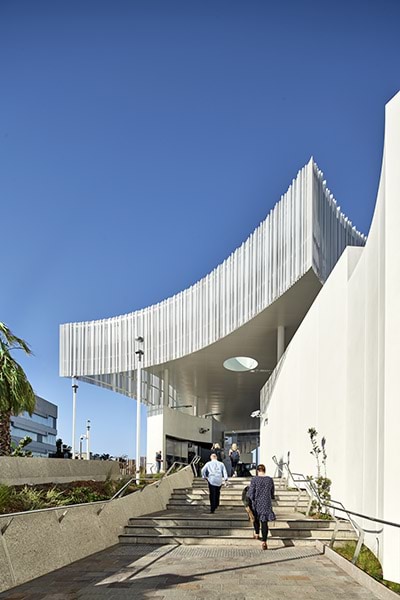
Transport
Transport enables us to access the destinations we need to get to. Our experience of moving to and from different places to meet our day-to-day needs shapes our ability to connect with our friends, family and neighbourhoods. Well-integrated transport networks, including connected footpaths, cycle paths, public transport and streets, ensure we can safely, conveniently and efficiently get to work or school, do our shopping, visit family and friends, and engage in sport, cultural and recreational activities. Equitable access means that we can reach these places regardless of where we live, our age, income or physical abilities, at all times of the day.
The design of transport networks plays a significant role in the physical shape of the city, and our everyday choices to walk, cycle, use public transport or drive to where we need to go. How they are designed affects travel time, cost and safety, as well the comfort and experience of our journeys. When places are challenging for people to get around, they are less economically productive, less sustainable and socially isolating. Poorly planned and designed transport networks mean more time spent commuting, and less time for friends, family and social, community or recreational activities.204
Places that prioritise walking, cycling and public transport offer greater health and environmental benefits. Walking and cycling are inexpensive, emission free and offer health and social benefits.205 A high-quality environment for pedestrians benefits all citizens, as people with impaired mobility also need high-quality, safe and comfortable footpaths to move around. Walking contributes to the vitality of places, and is crucial for solving many challenges facing society, including pollution, global warming, congestion and health.206 Neighbourhoods and connections between destinations that are designed to prioritise cars can create unsafe and hostile environments for walking. Places that do not have high-quality, connected and safe walking and cycling links, and are cut off from public transport, contribute to our dependency on cars. This can contribute to social isolation and traffic congestion and makes it harder for people to access jobs and education. Driving is not only linked to sedentary lifestyles and an increased risk of obesity and other diseases, but is a significant contributor to air pollution, emissions and noise. Well-designed active transport improves productivity, the environment, and our health and wellbeing.
Measuring good design
There are several ways that the impact of design is measured for transport. Travel behaviour is analysed through a range of data sets including journey to work and travel surveys. This data helps to monitor the number of people who get around by walking, cycling, using public transport, and driving. Access can be measured through the distance to different types of transport infrastructure such as a bus or tram stop or train station, but also proximity to a range of services such as shops, schools or parks within walking or cycling distance. The safety of transport infrastructure, such as safety and stops can also be assessed through crime prevention through environmental design (CPTED) principles. The quality of a street can be measured by monitoring the number of people walking or cycling at different times of day, week or year. Its safety can also be measured over time by monitoring the number of accidents. Traffic congestion is monitored by collecting data on vehicle numbers. Noise and air pollution can also highlight the effects of transport design.
Creating the business case
Places that are designed to prioritise walking, cycling and public transport offer several economic, environmental and social benefits. Transport accounts for 25 per cent of carbon dioxide emissions, with 75 per cent of this generated from road transport. Prioritising walking, cycling and public transport reduces air pollution and greenhouse gas emissions.207 Investment in designing streets that have quality spaces for walking and cycling generates a higher economic return compared with other transport infrastructure projects. A study of data from department of transportation and public works departments in 11 US cities evaluated the number of jobs created through the design, construction and materials procurement of pedestrian, bicycle and road infrastructure. Across 58 projects, the study estimated that for every $1 million invested on cycling projects, 11.4 jobs were created, compared with 10 jobs for pedestrian-only projects and 9.6 jobs for multi-use trails. Road-only projects were found to generate the least number of jobs, with 7.8 jobs per $1 million.208
Places designed to prioritise and encourage cars have an economic, social and environmental cost. A study in Portland in the US revealed a ‘green dividend’, where the reduction of driving by 20 per cent compared with the rest of the country helped residents save more than $1 billion, resulting in more disposable income to be spent with local businesses.209 Research also shows that increasing pedestrian activity offers benefits to the local economy. A study by Transport for London found that pedestrians spend approximately 65 per cent more than drivers, representing an additional £147 spent per month.210
Benefits of good design
Evidence shows that good transport design offers many benefits, including:
- increased productivity
- improved environmental outcomes, including better air quality, reduced pollution and carbon emissions
- improved health through active transport
- increased social cohesion
- improved safety
- improved accessibility and connectivity
- reduced congestion improved perceptions, experiences and comfort
- reduced maintenance cost of public transport facilities
- increased pedestrian and cycling activity
- increased public transport ridership
Impact of good design – key findings
Active transport
The design of streets affects whether people are likely to walk, and the presence and quality of footpaths is linked to active transport and recreation. Elements such as footpath surfaces, curb design, shelter, seating, lighting, trees and vegetation, public artwork and the design of surrounding buildings contribute to the quality and safety of streets for people to enjoy for walking, cycling, recreation and socialising.211 Streets with wide footpaths, seats and lighting support pedestrians. Street trees have many benefits including shade, noise reduction, mitigation of the urban heat-island effect, pollution reduction, economic benefit and visual delight.212 It is 5–15 degrees Celsius cooler walking beneath the canopy of a tree compared with walking on streets without trees, which increases comfort for pedestrians. This is particularly important given climate change is increasing temperatures. Good street lighting improves the perception of safety. Road crossings, traffic calming devices such as speed bumps, traffic lights with short pedestrian wait times, and lower traffic speeds and volumes encourage walking and cycling.213
Residents of walkable neighbourhoods experience better social outcomes compared with those living in car-dependent areas. A study in Ireland found people living in walkable neighbourhoods had 80 per cent higher levels of social capital than those in car-dependent neighbourhoods.214 They were more likely to know and trust their neighbours, and feel more engaged with their community.
Analysis of 66 places in Washington DC found that walkable places perform better economically,215 and providing a walkable street gives a premium of $9 per square foot for annual office rents, $7 per square foot for retail rents, $82 per square foot for home values and $300 per month for apartment rents.216
A range of features have been linked with cycling, including population density, connectivity, land-use diversity, accessibility to destinations, the provision of bike lanes and off-road paths, traffic levels and speeds and end-of-trip facilities including showers and secure bike parking. Infrastructure including separated bike lanes, lane markings or signage can support cycling.217 In several countries, such as Germany, France, the Netherlands and Sweden, injury and fatality rates for pedestrians and cyclists fell by more than 70 per cent from 1975 to 2001.218 This was supported by lowering speed limits, introducing high-quality transport systems and demand management strategies such as reduced car parking, road design that reduces conflicts between pedestrians, cyclists and drivers, and improved traffic signals.
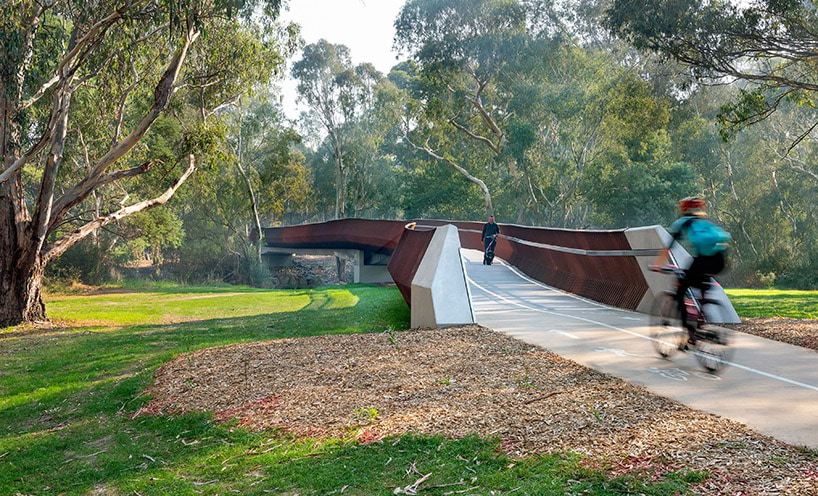
Integrated land use and transport
A mix of destinations within neighbourhoods encourages people to walk and cycle, helping to create a sense of community and belonging. Locating shops, services, jobs and community facilities together enables people to undertake one journey to perform several activities.219 Areas with diverse and accessible local destinations and transport options encourage people to walk. The benefits of this include the potential for unplanned social encounters that contribute to a sense of community, reducing loneliness and social isolation that can affect premature mortality.220 This also increases natural surveillance, which makes people feel safer and helps to prevent crime.221 Neighbourhoods that are compact and designed to integrate parking and transport infrastructure encourage walking and cycling, which contributes to a reduction in fuel consumption by 43 per cent.222
Access to transport affects participation, with one in four people with limited access to transport in Melbourne experiencing difficulty participating in social activities at least once a week.223
Proximity of homes to schools is linked with children walking or cycling to school. A study found that 5–6 year old children are five times more likely to walk or cycle to school if the walk is less than 800 metres,224 and 10–12 year old children are 10 times more likely to walk or cycle to school using the same distance.
Cars
Major roads and traffic infrastructure create physical and social segregation, reducing the level of connections between neighbourhoods. In places that are designed for cars, not owning a car or not being able to drive is a barrier to mobility.226 Congestion is costly to the economy and affects productivity.227 It also has an environmental and social cost. Streets with high levels of traffic measurably reduce a community’s wellbeing, with one study showing that residents on streets with lower traffic levels had three times more friends than those who live on streets with high levels of car traffic.228 Using cars for long commutes negatively affects wellbeing, prompting people to work even more to increase their spending to offset the negative effects of driving.229 Every kilometre travelled by car or bike incurs a cost to society, with research estimating that this is 0.5 euros per kilometre for car driving compared with 0.08 euros for cycling. After including costs of road accidents and pollution on health and the cost of carbon, one kilometre driven by car is found to cost society 0.15 euros, whereas there is a gain of 0.16 euros for each kilometre cycled.230
Residents living on streets with lower traffic volumes have three times the friends.225
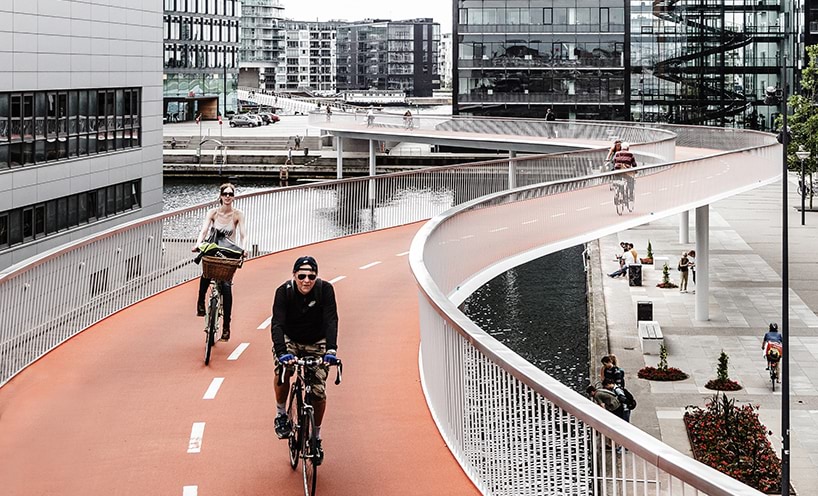
Facility design
The quality of a train station, tram or bus stop affects our perceptions as well as our experiences, particularly our sense of comfort and safety. A well-designed transport facility provides an engaging space for its users, and is robust enough to handle very high use rates. Quality, durable materials can give long life spans and help form an identity for a station or interchange. Train stations, bus interchanges and airports are highly technical entities in terms of systems, circulation and servicing, but many are not designed for user experience, amenity and a sense of place, and they often feel the same. Train stations need to provide safe and secure environments for both commuters and staff. Transport facilities are public buildings and they create opportunities for public space around them. If well handled, these can be a focal point for community activity and provide natural meeting points, that can be activated by retail.
Research shows that design affects the experience and perception of public transport users. Research found that a better-designed station or stop makes the experience of waiting for the train, tram or bus easier.232 Researchers compared the actual and perceived wait times of more than 800 people at 36 light rail, commuter rail and bus rapid transit stations across the Twin Cities in Minnesota.233 The researchers asked public transport users to indicate how many minutes they thought they had waited at the station or stop before boarding the train or bus, as well as their perceptions of the ‘pleasantness’ of the transport facility. The researchers found that people perceive their wait to be 1.3 times longer at stops with no amenities. People’s perceived waiting times are significantly reduced by the presence of basic amenities, including benches and shelters.
Another study found that people are willing to walk further, wait longer for a train and pay a premium to access a better-designed train station.234 Civil engineers at the University of Naples in Italy surveyed riders of two lines with similar service standards, serving a similar corridor with similar travel time, frequency, security, access and egress times, trains and riding comfort and running times in the Campania regional metro. One line had a traditional design, and the other was a new ‘Rainbow’ line with high architectural and aesthetic standards. They found the design of stations had a significant influence on people’s choices about which line to take, with people willing to pay 0.50 euros more for a one-way fare at the nicer station, wait up to seven more minutes for a train, and walk an additional 10 minutes to get there. This is the equivalent of extending a station’s catchment area by approximately 400 metres.
People are willing to pay more, wait up to seven minutes more for a train, and walk 10 minutes further to access a nicer train station – the equivalent of extending the station catchment by approximately 400 metres.231
Copenhagen transport strategies
Like many other cities, in the 1960s, Copenhagen’s streets were filled with traffic and its public squares used for car parking. The quality of streets and public spaces for people to walk, cycle and enjoy, were compromised by the car. A series of initiatives over the following decades to transform the city to prioritise walking and cycling over cars has been successful in reducing congestion, improving health and safety, reducing pollution and emissions, and creating a vibrant place to live.
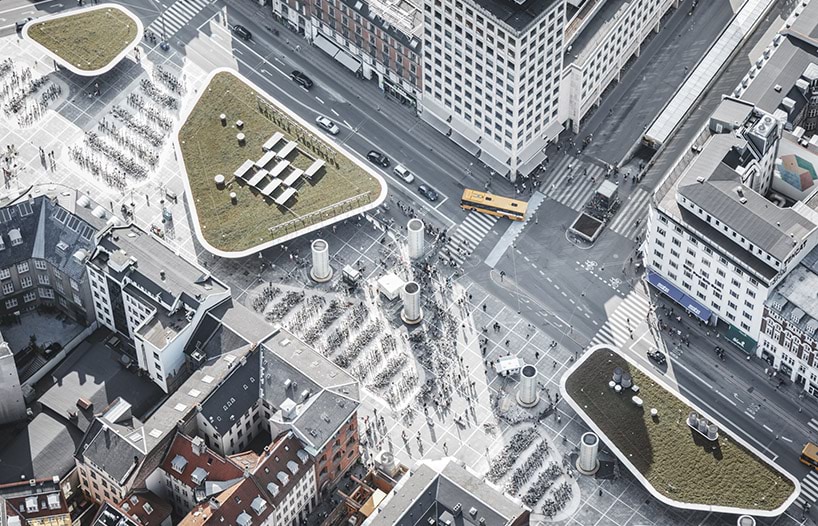
Walkable places
In 1962, cars were removed from the city’s main street, Strøget, to become the longest pedestrian promenade in the world. In the first year alone, the number of pedestrians on Strøget rose 35 per cent.235 The removal of cars improved comfort and safety for pedestrians, with studies of public activity conducted from 1968 to 1995 revealing that the number of people sitting or lingering in public places increased by a factor of four.236 The city has continued to redesign streets, traffic islands and car parking into places for people, and discourage driving in the inner city by limiting the number of car spaces and traffic reducing lanes into the city. From 1962 to 2005, places for pedestrians grew from 15,000 to 100,000 square metres of car-free streets and public spaces.237 80 per cent of journeys in the city centre are made walking.238
Encouraging cycling
For several decades, Copenhagen has been committed to redesigning streets to improve access and safety for people cycling. From 1995 to 2005, the number of cyclists doubled and today, 41 per cent of journeys to work and education are made by bicycle, making it a primary way of getting around.239 The City of Copenhagen, Danish Government and private sector have invested in cycling infrastructure including bicycle lanes, dedicated bicycle bridges, bicycle parking, and improved signalling systems.240 These initiatives have improved cycling conditions, including safety, comfort, and travel time, encouraging more people to ride.241 Cycle superhighways, featuring wide dedicated bike paths that prioritise bicycles to help cyclists travel faster to destinations. The Cycle Serpent, an elevated bike superhighway that opened in 2014, has over 20,000 cyclists each day.242 A cost benefit analysis of the project anticipates a positive net present value of more than AU$9 million over 20 years, due to the travel time saved and reduction in travel by car.243 With a 390km network of bicycle paths, 50 per cent of the population travels by bicycle, bringing many environmental and health benefits.244 Every kilometre cycled in Copenhagen is estimated to save AU$0.20 in health costs, and the city’s cyclists request 1.1 million fewer sick days.245 Cyclists also help to reduce CO2 emissions by an average of 20,000 tons a year.246
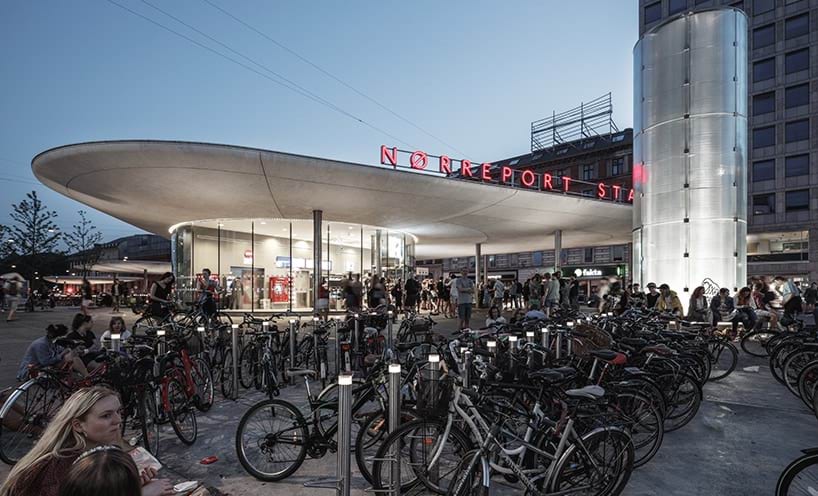
Integrated public transport
The city is building a new metro line, the Cityringen, which will expand the Copenhagen Metro and connect two existing routes. Upon competition, 85 per cent of all homes, workplaces and educational institutions within the inner city, will be located within a 600 metre walk of a metro or train station.247 The new subterranean stations are designed to reflect some of the important qualities which are featured across Copenhagen Metro stations, particularly natural light, easy access between the street and platform, and a high level of bike parking.248
The renovation of Denmark’s busiest public transport hub, Nørreport Station, extended beyond designing a new station building, to the creation of new urban space, integrating the needs of people walking, cycling, using public transport and driving. Designed by Gottlieb Paludan Architects and COBE, the project included an expansive public forecourt which is used by 350,000 people each day. A series of round glass buildings providing entry to the station are designed and located to prioritise the flow of pedestrians and their sense of safety. The station buildings are designed of natural and low maintenance materials including concrete, granite, glass and stainless steel, with feature lighting to activate the precinct at night. The canopies above the station entries feature green roofs and solar panels, and a series of towers which provide ventilation to the underground platforms serve as landmarks within the forecourt. Vehicular traffic in the area was largely redirected, with the exception of one street to the north of the station. A prominent bicycle parking area for more than 2,000 bikes is sunken slightly below the forecourt level to minimise the impact on pedestrian views.
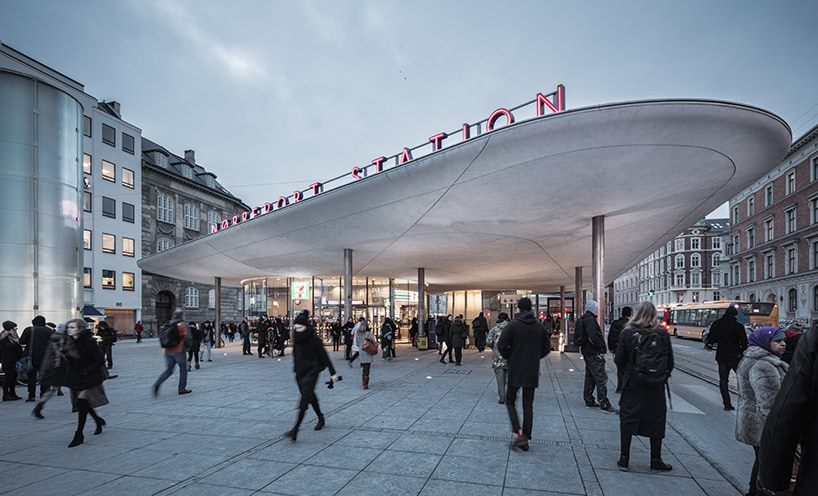
References
1 Rawsthorn A 2009, ‘Defining good or bad design’, The New York Times, 31 January, https://dealbook.nytimes.com/2009/01/31/defining-good-or-bad-design/
2 Commission for Architecture and the Built Environment 2002, The value of good design, CABE, London.
3 National Audit Office 2004, Getting value for money from construction projects through design.
204 Kelly J-F 2012, Social cities, Grattan Institute, Melbourne.
205 International Transport Forum 2012, Pedestrian safety, urban space and health, OECD Publishing.
206 Ibid.
207 Woodcock J, Edwards P, Tonne C et al. 2009, ‘Public health benefits of strategies to reduce greenhouse-gas emissions: urban land transport’, Lancet, vol. 374, pp. 1930–43, cited in Giles-Corti et al. 2016, ‘City planning and population health: a global challenge’, The Lancet, vol. 388, no. 10062, pp. 2912–24.
208 Garrett-Peltier H 2011, Pedestrian and bicycle infrastructure: a national study of employment impacts, PERI, http://www.peri.umass.edu/fileadmin/pdf/published_study/PERI_ABikes_Jun…
209 Cortright J 2007, Portland’s green dividend, CEOs for Cities, http://blog.oregonlive.com/commuting/2009/09/pdxgreendividend.pdf, cited in ARUP 2016, Cities alive: toward a walking world, ARUP.
210 Transport for London 2014, Annual report 2014–15, http://content.tfl.gov.uk/annual-report-2013-14.pdf.
211 Committee on Physical Activity, Health, Transportation and Land Use 2005, Does the built environment influence physical activity? Examining the evidence, Transportation Research Board Institute of Medicine of the National Academies, Washington, DC.
212 Heart Foundation 2013, Making the case for investment in street trees and landscaping in urban environments, Heart Foundation, Melbourne.
213 Heart Foundation nd, Healthy active by design, Heart Foundation, Melbourne.
214 Leyden KM 2003, ‘Social capital and the built environment: the Importance of walkable neighborhoods’, AJPH, vol. 93, no. 9, pp. 1546–51, http://www.jtc.sala.ubc.ca/reports/leyden.pdf cited
in ARUP 2016, Cities alive: toward a walking world, ARUP.
215 Leinberger CB and Alfonzon M 2012, ‘Walk this way: the economic promise of walkable places in metropolitan Washington DC’, Brookings, https://www.brookings.edu/wp-content/uploads/2016/06/25-walkable-places…
216 Walkscore nd, Walkability, real estate, and public health data, https://www.walkscore.com/professional/research.php, cited in ARUP 2016, Cities alive: toward a walking world, ARUP.
217 Heart Foundation nd, op. cit.
218 Buehler R and Pucher J 2012, ‘Walking and cycling in Western Europe and the United States: trends, policies, and lessons’, TR News vol. 5, pp. 34–42; Pucher et al. 2003. ‘Promoting Safe Walking and cycling to improve public health: lessons from the Netherlands and Germany’, American Journal of Public Health, vol.93; Pucher et al. 2010. ‘Infrastructure programs and policies to increase cycling’, Preventive Medicine, cited in Giles-Corti et al. 2016, op. cit.
219 Kelly J-F 2012, op. cit.
220 Kent J and Thompson S 2014, ‘Connecting and strengthening communities in places for health and well-being’, Australian Planner, vol. 260–71, cited in Giles-Corti et al. 2016, op. cit.
221 Cozens P 2008, ‘New urbanism, crime and the suburbs: a review of the evidence’, Urban Policy Res, vol. 26, pp. 429–44, cited in Giles-Corti et al. 2016, op. cit.
222 New Zealand Ministry of the Environment 2005, The value of urban design; Committee for Architecture and the Built Environment 2006, Buildings and spaces: why design matters, CABE, London.
223 Delbosc A and Currie G 2011, ‘Transport problems that matter: social and psychological links to transport disadvantage’, Journal of Transport Geography vol. 19, no. 1, pp. 170–78, cited in Kelly J-F 2012, op. cit.
224 Merom D et al. 2006, ‘Active commuting to school among NSW primary school children: implications for public health’, Health & Place vol. 12, no. 4, pp. 678–87.
225 StreetFilms 2010, Revisiting Donald Appleyard’s Livable streets, https://vimeo.com/16399180, cited in ARUP
2016, op. cit.
226 Kelly J-F 2012, op. cit.
227 Ibid.
228 StreetFilms 2010, op. cit.
229 Frey BS and Stutzer A 2002, ‘The economics of happiness’, World Economics, vol. 3, no. 1, https://www.bsfrey.ch/articles/365_02.pdf, cited in ARUP 2016, op. cit.
230 Gossling S and Choi A 2015, ‘Transport transitions in Copenhagen: comparing the cost of cars and bicycles’, http://www.sciencedirect.com/science/article/pii/S0921800915000907#
231 Jaffe E 2014a, ‘Nicer transit stations attract more riders’, City Lab, 31 November, https://www.citylab.com/transportation/2014/01/nicer-transit-stations-a…
232 Jaffe E 2014b, ‘A basic shelter can make the wait for the bus feel shorter’, City Lab, 18 September, https://www.citylab.com/solutions/2014/09/a-basic-shelter-canmake-the-w…
233 Fan Y, Guthrie A and Levinson D 2016, ‘Perception of waiting time at transit stops and stations’, Transitway Impacts Research Program Report no. 9, Center for Transportation Studies, University of Minnesota.
234 Jaffe E 2014a, op. cit.
235 ARUP 2016, Cities alive: toward a walking world, ARUP.
236 Gehl J 2010, Cities for people, Island Press, Washington, DC.
237 Ibid.
238 European Commission: Directorate-General for the Environment 2004, ‘Reclaiming city streets for people: Chaos or quality of life?’, EU, Brussels.
239 City of Copenhagen 2017, ‘Copenhagen city of cyclists: The bicycle account 2016,’ http://www.cyclingembassy.dk/wp-content/uploads/2018/02/CPH-Bicycle-Acc…
240 Ibid.
241 Ibid.
242 Ibid.
243 Ibid.
244 Cathcart-Keays A and Warin T 2016, ‘Story of cities #36: How Copenhagen rejected 1960s modernist ‘utopia,’’ The Guardian, 5 May, https://www.theguardian.com/cities/2016/may/05/story-cities-copenhagen-…
245 Ministry of Foreign Affairs of Denmark, ‘A nation of cyclists,’ https://denmark.dk/people-and-culture/biking
246 Ibid.
247 Gerdes J 2013, ‘Copenhagen’s ambitious push to be carbon-neutral by 2025’ The Guardian, 13 April, https://www.theguardian.com/environment/2013/apr/12/copenhagen-push-car…
248 Metroselskabet, ‘New Stations,’ https://intl.m.dk/#!/about+the+metro/metro+expansion/new+stations
Updated
